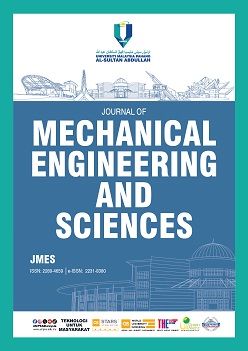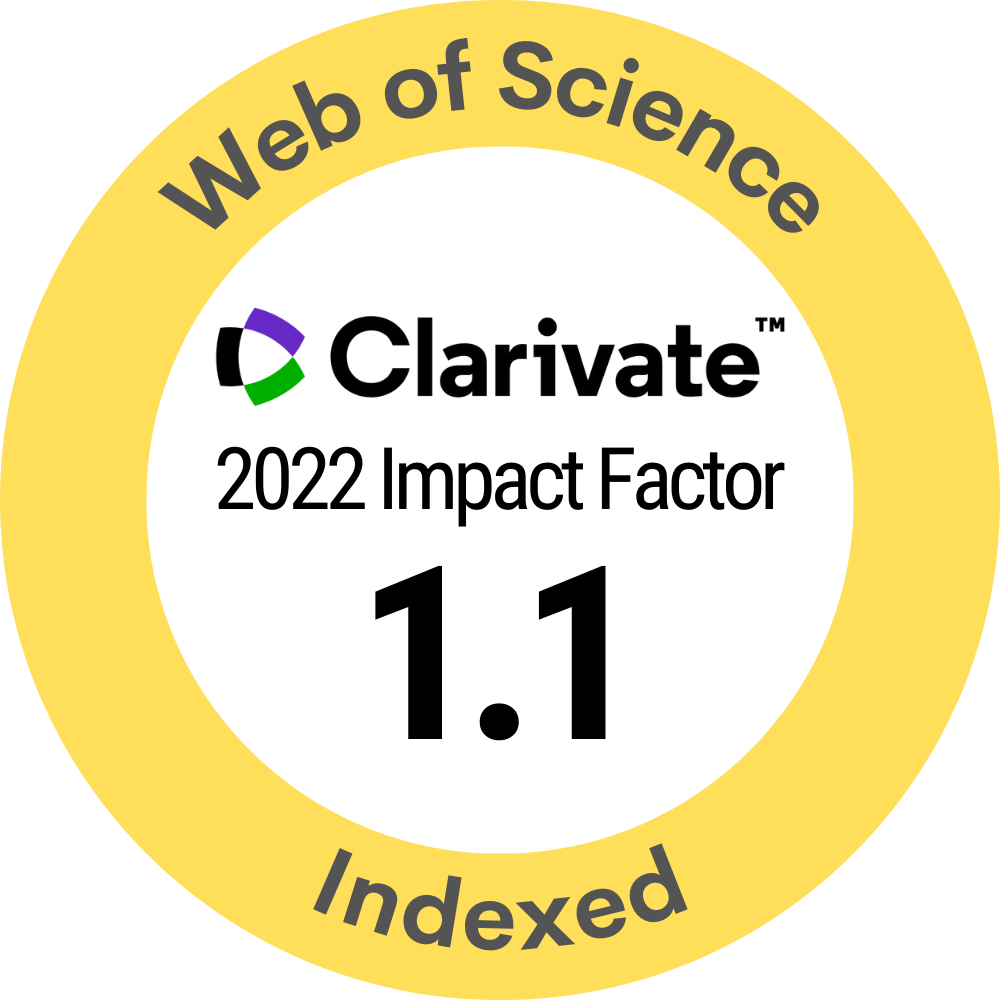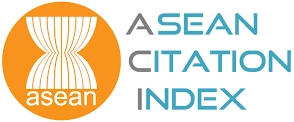Scenario of energy policy and act in Malaysian energy building efforts for sustainable development: A review
DOI:
https://doi.org/10.15282/jmes.18.4.2024.8.0814Keywords:
Energy efficiency, Energy policy, Energy act, Energy consumption, SustainabilityAbstract
Malaysia is a country in Southeast Asia that is close to the latitude and has a typical tropical climate. Due to our dependence on finite fossil fuel sources, which eventually results in CO2 emissions, effective energy use is essential. Population expansion and economic growth are thought to have an impact on the nation's rising energy demand. Therefore, the power sector in Malaysia faces significant problems with climate change, energy security and sustainability. Energy-efficient building techniques can be used to adopt the aforementioned problems. In Malaysia, buildings use 12% of the nation's whole energy, with the residential and commercial sectors using 50.4% of all electrical energy. Thus, maximizing energy efficiency in buildings is essential for lowering energy consumption and attractive regional environmental sustainability. This review article examines the evolving landscape of energy policies and legislative acts in Malaysia, focusing on their implications for sustainable development in the building sector. The study highlights Malaysia's commitment to reducing greenhouse gas emissions and enhancing energy efficiency through a series of national policies and frameworks. It explores the integration of these policies into the building industry, assessing their effectiveness in promoting sustainable construction practices and energy-efficient building designs. By analysing policy outcomes and comparing them with global best practices, the review offers a thorough understanding of how Malaysia's energy policies are steering the built environment towards greater sustainability. The findings highlight the need for ongoing policy enhancement and cross-sector collaboration to achieve long-term energy and environmental objectives.
References
[1] Energy Commssion, “National energy balance 2020,” Yearly Report, no. ST(P)09/09/2023, pp. 1-86, 2023.
[2] J. Burck, T. Uhlich, C. Bals, N. Höhne, L. Nascimento, “Climate change performance index,” Report: NewClimate Institute & Climate Action Network, pp. 1-34, 2023.
[3] The World Bank Group and Asian Development Bank, “Climate risk country profile: Malaysia,” Report, pp. 1-28, 2021.
[4] International Energy Agency, “Key world energy statistics,” Annual Report: OECD Publishing, pp. 1–81, 2021.
[5] P. Muñoz, D. Dominguez, R. Sánchez-Vázquez, V. Letelier, O. Gencel, “Building decarbonization by means of ancient techniques. Assessment of environmental impact, energy performance, and mechanical safety,” Journal of Building Engineering, vol. 74, p. 106896, 2023.
[6] P. H. Shaikh, N. B. M. Nor, A. A. Sahito, P. Nallagownden, L. Elamvazuthi, M. S. Shaikh, “Building energy for sustainable development in Malaysia: A review,” Renewable and Sustainable Energy Reviews, vol. 75, pp. 1392-1403, 2017.
[7] Economic Planning Unit Prime Minister’s Department, “National energy policy 2022-2040,” Energy Policy, pp. 1-73, 2022.
[8] A. Abdul-Manan, B. Azizan, W. C. Lee, “Ex-post critical evaluations of energy policies in Malaysia from 1970 to 2010: A historical institutionalism perspective,” Energies, vol. 8, no. 3, pp. 1936-1957, 2015.
[9] N.A. Ludin, H. Phoumin, F. S. M. Chachuli, N. H. Hamid, “Sustainable energy policy reform in Malaysia,” Revisiting Electricity Market Reforms, pp. 251-281, 2022.
[10] Y. Puan, M. Mohd-Noor, M. Suhaiza Hanim, R. Shamshubaridah, “Energy policy shifts towards a sustainable energy future for Malaysia,” Clean Technologies and Environmental Policy, vol. 18, pp. 1685–1695, 2016.
[11] Z. Zulkifli, “Malaysia Country Report,” Energy Outlook and Energy Saving Potential in East Asia 2020, pp. 170-190, 2021.
[12] A. A. Most, A. Md Mahmudul, H. Mukaramah, “Energy efficiency policies in Malaysia: A critical evaluation from the sustainable development perspective,” Environmental Science Pollution Research, vol. 29, pp. 18365–18384, 2022.
[13] S. K. Cheng, G. Lalchand, “A review on sustainable power generation in Malaysia to 2030: Historical perspective, current assessment, and future strategies,” Renewable and Sustainable Energy Reviews, vol. 29, pp. 952-960, 2014.
[14] H. O. Tick, H. Md, S. Jeyraj, C. T. Siew, C. C. Shing, “Energy policy and alternative energy in Malaysia: Issues and challenges for sustainable growth–An update,” Renewable and Sustainable Energy Review, vol. 81, pp. 3021-3031, 2018.
[15] T. S. Jalal, P. Bodger, “National energy policies and the electricity sector in Malaysia,” in 3rd International Conference on Energy and Environment (ICEE), pp. 385-392, 2009.
[16] D. Awang Dzul Hashriq, A. G. Ahmad Bashawir, I. Rabiul, “Evaluating Malaysia's fuel diversification strategies 1981–2016,” Energy Policy, vol. 137, p. 111083, 2020.
[17] S. C. Chua, T. H. Oh, “Review on Malaysia's national energy developments: Key policies, agencies, programs, and international involvements,” Renewable and Sustainable Energy Reviews, vol. 14, no. 9, pp. 2916-2925, 2010.
[18] T. S. Yean. Development and Modern Industrial Policy in Practice: Chapter 12 - Diversification and Industrial Policies in Malaysia. 1st Ed. United Kingdom: ElgarOnline, 2015.
[19] A. J. Maidin, “Challenges in implementing and enforcing environmental protection measures in Malaysia,”in 13th Malaysia Law Conference, Dec. 16, Kuala Lumpur, 2005.
[20] N. E. M. M. Mahayuddin, S. N. A. S. Mustaffa, H. Shukor, J. P. Tamayo, F. H. Kasim, “Biodiesel production in Malaysia: Current status and challenges,” in AIP Conference Proceedings, vol. 2541, no. 1, p. 020005, 2022.
[21] N. M. Isa, A. Sivapathy, N. N. Adjrina Kamarruddin, “Malaysia on the way to sustainable development: Circular economy and green technologies,” Modeling Economic Growth in Contemporary Malaysia, pp. 91-115, 2021.
[22] M. Mustafa, A. Sufian, S. Z. S. A. Kader, “Progression of policies and laws towards addressing climate change and sustainability issues: Recent initiatives from Malaysia,” Human and Environmental Security in the Era of Global Risks, pp. 133-147, 2019.
[23] Ministry of Natural Resources and Environment, “National Climate Change Policy 2.0,” Climate Change Division, pp. 1-88, 2024.
[24] S. S. K. Kong, J. Sentian, M. T. Chuang, M. C. G. Ooi, F. P. Chee, H. W. Chang, “Simulation analysis of the future surface ozone in the Malaysian region under representative concentration pathways (RCPs) emission scenarios,” International Journal Environmental Science and Technology, vol. 16, pp. 7357–7374, 2019.
[25] S. F. Salleh, M. E. Mohd Roslan, A. Abd Rahman, A. H. Shamsuddin, T. A. Rashid, B. K. Sovacool, “Transitioning to a sustainable development framework for bioenergy in Malaysia: Policy suggestions to catalyze the utilization of palm oil mill residues,’ Energy Sustainability and Society, vol. 10, no. 38, pp. 1-20, 2020.
[26] K. Chan, K. P. Gopal, “Comparative analysis of energy efficiency action plans of Malaysia and Ireland using text mining,” Enhanced Knowledge in Sciences and Technology, vol. 3, no. 1, pp. 207-215, 2023.
[27] M. L. Iskandar, A. S. Ariffin, “Relationship between National Automotive Policy (NAP), innovation and automotive vendors’ performance in Malaysia,” Management Science Letters, vol. 9, no. 8, pp. 1181-1198, 2019.
[28] United Nations Development Programme, “State of climate ambition,” Global Outlook Report, pp. 1-52, 2021.
[29] W. M. W. Zahari, F. S. Shuaib, “The distribution of petroleum resources in Malaysia: unpacking federalism,” The Journal of World Energy Law & Business, vol. 13, no. 5-6, pp. 369–385, 2020.
[30] F. Ghazali, A. H. Ansari, “The renewable energy Act 2011: A study on renewable energy development in Malaysia,” International Journal of Law, Government and Communication, vol. 3, no. 7, pp. 143-151, 2018.
[31] H. Hashim, W. S. Ho, “Renewable energy policies and initiatives for a sustainable energy future in Malaysia,” Renewable and Sustainable Energy Reviews, vol. 15, no. 9, pp. 4780-4787, 2011.
[32] D. Joshi, “Evaluating the performance of the sustainable energy development authority (SEDA) and renewable energy policy in Malaysia,” Report, Penang Institute. Pulau Pinang, Malaysia, 2018.
[33] W. Y. Leong, Y. Z. Leong, W. S. Leong, “Energy management policy and strategies in ASEAN,” Advances in Science, Technology and Engineering Systems Journal, vol. 9, no. 4, pp. 102-109, 2024.
[34] M. A. M. Norhisham, M. A. Razali, M. M. Amin, N. A. Hadi, “Review on preliminary energy audit for 27 years building at Kemaman Terengganu, Malaysia,” Journal of Complex Flow, vol. 4, no. 1, pp. 8-11, 2022.
[35] M. A. Razali, M. A. M. Norhisham, B. Manshoor, M. M. Amin, N. A. Hadi, “Energy consumption for old office building Kemaman, Terengganu Malaysia.” in AIP Conference Proceedings, vol. 2955, no. 1, p. 020016, 2023.
[36] M. A. Razali, I. Jailanee, A. Abdullah, J. Jaafar, M. M. Amin, N. A. Hadi, “Case study: Relation between room temperature and WCPU control temperature for office building at Kemaman,” in AIP Conference Proceedings, vol. 2955, no. 1, p. 020017, 2023.
[37] Z. Noranai, M. A. Razali, M. A. A. Abdullah, R. A. Rahman, M. Ishak, M. M. Som, et al., “Development of automation and energy monitoring system of air-conditioning & mechanical ventilation (AEMS-ACMV) for a 27-year-old office building at Terengganu, Malaysia,” in AIP Conference Proceedings, vol. 2955, no. 1, p. 020014, 2023.
[38] Z. Noranai, N. F. M. Joharudin, N. A. Latif, N. L. A. M. Kamil, M. A. Razali, “A case study on potential saving of energy consumption at Hospital Putrajaya,” Journal of Advanced Research in Fluid Mechanics and Thermal Sciences, vol. 100, no. 2, pp. 15–22, 2022.
[39] F. Azli, N. H. Ismail, S. Qistina, N. S. M. Yusoff, M. H. Mustafa, M. Mahdzir, “Contributing factors on the effectiveness of green building using the GBI tool: A case study of Putrajaya energy commission building,” Journal Of Project Management Practice (JPMP), vol. 4, no. 1, pp. 17-32, 2024.
[40] M. Danish, S. M. Shukri, I. Taib, “Sustainability of green design mosque in Cyberjaya,” Malaysia Architectural Journal, vol. 5, no. 3, pp. 45-60, 2023.
[41] S. K. Juhari, D. Omar, S. M. Kamaruddin, N. O. Chong, “The effects of low carbon cities framework checklist (LCCFC) implementation on community satisfaction level,” Planning Malaysia Journal, vol. 21, no. 5, pp. 155-172, 2023.
[42] C. K. Tang, N. Chin, “Building energy efficiency technical guideline for passive design,” Building Sector Energy Efficiency Project (BSEEP), pp. 1-196, 2013.
[43] C. K. Tang, N. Chin, Y. T. Guan, S. Misara, “Building energy efficiency technical guideline for active design,” Building Sector Energy Efficiency Project (BSEEP), pp. 1-269, 2016.
[44] P. Lee, P. T. I. Lam, W. L. Lee, “Risks in energy performance contracting (EPC) projects,” Energy and Buildings, vol. 92, pp. 116-127, 2015.
[45] T. Shang, K. Zhang, P. Liu, Z. Chen, “A review of energy performance contracting business models: Status and recommendation,” Sustainable Cities and Society, vol. 34, pp. 203-210, 2017.
[46] N. Abdul Manaf, A. Abbas, “Economic and environmental sustainability of low‐carbon power generation: relevancy in the Malaysia Green Technology Master Plan (GTMP),” Journal of Chemical Technology & Biotechnology, vol. 94, no. 5, pp. 1425-1432, 2019.
Downloads
Published
Issue
Section
License
Copyright (c) 2024 The Author(s)

This work is licensed under a Creative Commons Attribution-NonCommercial 4.0 International License.






